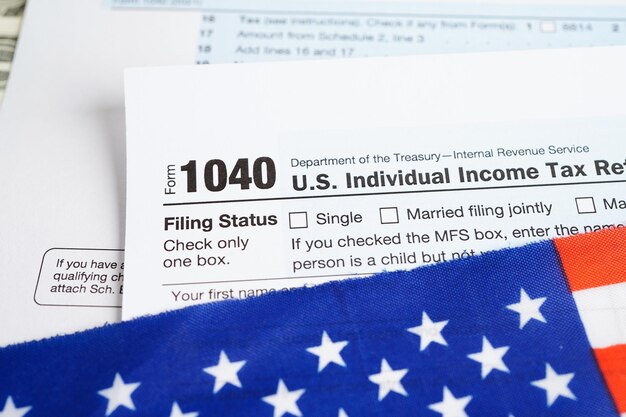Maximizing Your Retirement Savings: How Much Should You Contribute to Your 403(b) Each Paycheck?
Determining the right amount to contribute to your 403(b) retirement plan can feel like a daunting task, especially with various financial commitments tugging at your paycheck. However, navigating this decision wisely can significantly boost your financial security in retirement. In this comprehensive guide, we'll explore the factors influencing how much you should contribute per paycheck, offer practical insights, and delve into related topics to help you make informed decisions.
📊 Understanding the Basics of a 403(b) Plan
Before diving into contribution strategies, it's essential to understand what a 403(b) plan entails:
What is a 403(b) Plan?: A 403(b) is a retirement savings plan designed for employees of public schools, certain non-profit organizations, and ministers. It allows for tax-deferred contributions, meaning you won't pay taxes on the money until it's withdrawn.
Tax Advantages: Contributions are made from pre-tax income, reducing your taxable income for the year. This helps you save on taxes now while investing in your future.
Investment Options: Typically, a 403(b) offers a variety of investment options, including mutual funds and annuities, allowing you to tailor your portfolio according to your risk tolerance and growth expectations.
🏦 Factors to Consider When Determining Your Contribution Amount
Determining how much to contribute per paycheck involves evaluating several factors that align with your financial goals and current circumstances.
1. Assessing Your Current Financial Situation
Monthly Expenses: Start by analyzing your monthly expenses. Understanding your cash flow will help identify how much of your income can be directed towards retirement savings without impacting your living standards.
Existing Debts: Debts, especially those with high interest, might take precedence. Balancing debt repayment and saving for retirement is crucial. Consider how aggressive your debt payoff strategy is before committing a larger portion of your income to a 403(b).
2. Retirement Goals and Timeline
Retirement Age: Determine when you plan to retire. Those closer to retirement might need to make more substantial contributions.
Lifestyle Expectations: Envision the lifestyle you wish to maintain during retirement. The more lavish the lifestyle, the larger your retirement fund needs to be.
3. Employer Contributions
- Matching Contributions: Many employers offer matching contributions, where they match a percentage of your contributions up to a certain limit. At minimum, aim to contribute enough to take full advantage of this benefit—it's akin to free money towards your retirement savings.
4. Understanding Contribution Limits
- Annual Limits: Be aware of the annual contribution limits for 403(b) plans, which are set by the Internal Revenue Service (IRS) and can vary based on age. For example, those 50 and older may qualify for catch-up contributions, allowing larger tax-deferred savings.
🔧 Strategies for Deciding Your Contribution Amount
Percentage of Salary
One common approach is to contribute a percentage of your salary. Here’s how this strategy can work:
Starting Small: If you're new to a professional role, starting at 5% of your salary might be a manageable and effective step.
Incremental Increases: As you get comfortable, consider increasing your contribution percentage by 1% each year or with each salary increase, ensuring continuous growth in savings.
Fixed Dollar Amount
Alternatively, setting aside a fixed amount each paycheck can provide predictability and ease of budgeting:
- Budget-Friendly Consistency: Decide on a fixed amount that complements your lifestyle while contributing towards future goals. This method is particularly effective for individuals with fluctuating incomes.
Utilizing Bonuses and Windfalls
Take advantage of bonuses or unexpected windfalls by funneling these extra funds into your 403(b). This approach boosts savings without altering everyday spending habits.
📈 Evaluating and Adjusting Contributions
Regular Reviews
Reassessing your contributions regularly is vital:
Annual Check-Ins: Review your financial situation and retirement goals yearly to ensure your contributions remain aligned with your objectives.
Life Changes: Significant life events such as marriage, having children, or career changes might necessitate adjusting your contribution levels.
Market Conditions
Stay informed about market conditions, which could influence your investment strategy within the 403(b):
- Adapting Investment Strategies: Adapt your portfolio based on economic changes, risk tolerance, and shifting financial goals, ensuring optimal growth of your funds.
💡 Essential Tips for Maximizing 403(b) Contributions
Automate Your Contributions: Set up automatic deductions from your paycheck for seamless and consistent contributions.
Diversify Investments: Within your 403(b) plan, spread your investments across different asset types to mitigate risks.
Take Full Advantage of Employer Match: Contribute at least enough to receive the full employer match, optimizing retirement savings potential at no additional cost.
Monitor Fees: Be aware of fees associated with various investment options within your plan, choosing those that maximize returns while minimizing costs.
📌 Key Takeaways at a Glance
Here's a quick checklist to keep you on track:
- Assess Expenses: Ensure you have a clear view of your monthly budget.
- Leverage Employer Match: Contribute at least the minimum to achieve maximum employer benefits.
- Review Regularly: Revisit your contributions and strategy annually or with lifestyle changes.
- Consider Plausible Increases: Gradually increase the contribution as your financial situation improves.
Each decision about contributions should ultimately reflect your unique financial situation, retirement dreams, and life circumstances. Through careful planning and consistent monitoring, your 403(b) can become a robust nest egg that supports a comfortable and secure retirement.

Related Topics
- Are 403b Contributions Tax Deductible
- Can a 401k Be Rolled Into a 403b
- Can a 403b Be Rolled Into An Ira
- Can I Borrow Against My 403b
- Can I Borrow From My 403b
- Can I Borrow From My 403b Without Penalty
- Can I Contribute To 403b And 457b
- Can I Withdraw From 403b While Still Employed
- Can I Withdraw From My 403b To Buy a House
- Can You Max 403b And 457